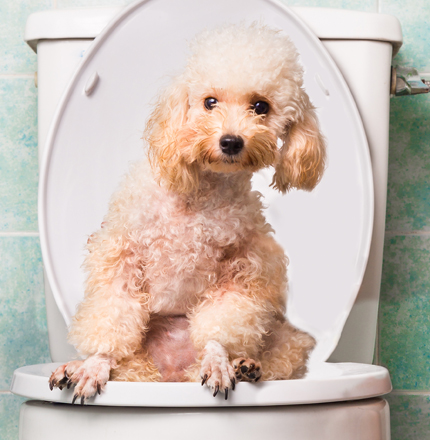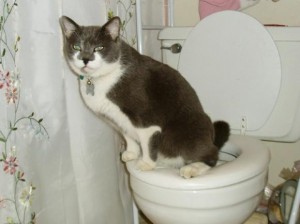Essential Issues Regarding Flushing Animal Waste Down the Toilet
Essential Issues Regarding Flushing Animal Waste Down the Toilet
Blog Article
Just how do you actually feel in relation to Don't Flush Your Pets Poo Down The Loo, Vet Warns?

When it pertains to taking care of waste, particularly animal waste, many individuals often resort to the hassle-free choice of flushing it down the commode. However, this seemingly easy solution can have significant effects for the setting and public health. In this article, we'll explore why flushing animal waste down the commode is a poor idea and offer alternative methods for appropriate disposal.
Introduction
Proper waste disposal is important for preserving ecological sustainability and public health. While it might appear harmless to flush animal waste down the commode, it can lead to numerous concerns, both for the atmosphere and human wellness.
Risks of flushing animal waste
Environmental impact
Purging animal waste presents unsafe bacteria and microorganisms right into rivers, which can adversely influence water environments. These microorganisms can pollute water sources and harm aquatic life, interfering with fragile ecosystems.
Public health issues
Animal waste contains hazardous germs such as E. coli and Salmonella, which can posture severe wellness dangers to humans. Flushing animal waste down the commode can infect water supplies, leading to the spread of diseases and infections.
Alternatives to flushing
Instead of purging animal waste down the toilet, there are a number of alternate disposal methods that are extra eco-friendly and sanitary.
Composting
Composting animal waste is an environment-friendly means to take care of it. By composting, organic matter is broken down right into nutrient-rich dirt, which can be used to fertilize yards and plants.
Garbage dump disposal
Taking care of animal waste in a land fill is another choice. While not as eco-friendly as composting, it is a much safer choice to flushing, as it prevents the contamination of water resources.
Animal waste disposal systems
There are specialized family pet garbage disposal systems available that securely and hygienically dispose of pet waste. These systems usually make use of enzymes to break down waste and eliminate smells.
Steps to correct pet garbage disposal
To ensure correct disposal of pet waste, adhere to these steps:
Scooping and landing waste
Frequently scoop and bag pet waste making use of biodegradable bags. This protects against waste from contaminating the setting.
Making use of designated waste bins
Dispose of bagged animal waste in assigned waste containers, such as compost bins or landfill containers. Stay clear of flushing it down the bathroom in all costs.
Cleaning up litter boxes and family pet locations frequently
Routinely clean litter boxes and family pet areas to prevent the accumulation of waste and germs. Usage pet-safe cleansing items to preserve health.
Benefits of appropriate disposal techniques
Adopting correct disposal approaches for animal waste uses a number of advantages:
Lowered environmental pollution
Appropriate disposal techniques lower the threat of environmental pollution, shielding waterways and ecological communities from contamination
Minimized risk of water contamination.
By staying clear of flushing pet waste down the bathroom, the risk of water contamination is dramatically reduced, guarding public health.
Boosted sanitation and hygiene
Correct disposal approaches advertise better sanitation and health, developing a much safer setting for both human beings and animals.
Conclusion
To conclude, purging pet waste down the toilet is harmful to the atmosphere and public health. By embracing alternate disposal approaches and complying with proper waste management practices, we can minimize the unfavorable influence of animal waste and add to a cleaner, healthier planet.
What To Do With Dog Poo – The Do's And Don'ts Of Disposing Of Faeces
Dog poo bins
Some councils provide dedicated dog waste bins in popular dog-walking areas that can take dog poo that has been bagged but you can legally dispose of dog waste in any public litter bin, as long as it is securely bagged. This also applies to your wheelie bin at home.
Do not flush
Water companies do not recommend flushing dog faeces down the toilet because certain parasites can survive the water processing treatment and are potentially harmful to humans. You should also never consider flushing dog poo that has been bagged down the toilet as the bags will not break down and instead create severe blockages in the sewage system.
In the woods
The Forestry Commission promotes a ‘stick and flick’ method for dealing with waste in the woods. This means finding a stick and using it to flick any poo from off the path so that it is out of the way of other walkers. You could also bury it as long as it is not in an area where there might be livestock.
Livestock
Parasites found in dog poo can be transmitted to livestock if they inadvertently eat infected faeces that has been left on grazing land. This could result in the death of sheep or abortion in cattle so you should always make sure you pick up your dog’s waste in fields where livestock could be present.

Routinely clean litter boxes and family pet areas to prevent the accumulation of waste and germs. Usage pet-safe cleansing items to preserve health.
Benefits of appropriate disposal techniques
Adopting correct disposal approaches for animal waste uses a number of advantages:
Lowered environmental pollution
Appropriate disposal techniques lower the threat of environmental pollution, shielding waterways and ecological communities from contamination
Minimized risk of water contamination.
By staying clear of flushing pet waste down the bathroom, the risk of water contamination is dramatically reduced, guarding public health.
Boosted sanitation and hygiene
Correct disposal approaches advertise better sanitation and health, developing a much safer setting for both human beings and animals.
Conclusion
To conclude, purging pet waste down the toilet is harmful to the atmosphere and public health. By embracing alternate disposal approaches and complying with proper waste management practices, we can minimize the unfavorable influence of animal waste and add to a cleaner, healthier planet.
What To Do With Dog Poo – The Do's And Don'ts Of Disposing Of Faeces
Dog poo bins
Some councils provide dedicated dog waste bins in popular dog-walking areas that can take dog poo that has been bagged but you can legally dispose of dog waste in any public litter bin, as long as it is securely bagged. This also applies to your wheelie bin at home.
Do not flush
Water companies do not recommend flushing dog faeces down the toilet because certain parasites can survive the water processing treatment and are potentially harmful to humans. You should also never consider flushing dog poo that has been bagged down the toilet as the bags will not break down and instead create severe blockages in the sewage system.
In the woods
The Forestry Commission promotes a ‘stick and flick’ method for dealing with waste in the woods. This means finding a stick and using it to flick any poo from off the path so that it is out of the way of other walkers. You could also bury it as long as it is not in an area where there might be livestock.
Livestock
Parasites found in dog poo can be transmitted to livestock if they inadvertently eat infected faeces that has been left on grazing land. This could result in the death of sheep or abortion in cattle so you should always make sure you pick up your dog’s waste in fields where livestock could be present.

I stumbled upon that blog posting about Don't Flush Your Pets Poo Down The Loo, Vet Warns while doing a search on the internet. Those who enjoyed our blog entry kindly remember to pass it around. Thanks so much for going through it.
Check It Out Report this page